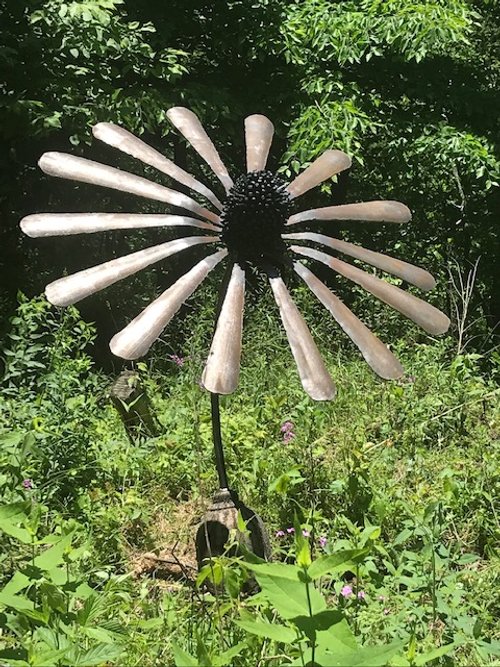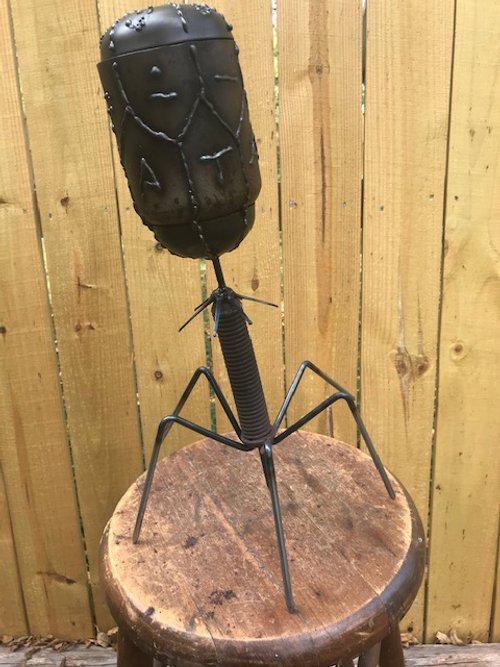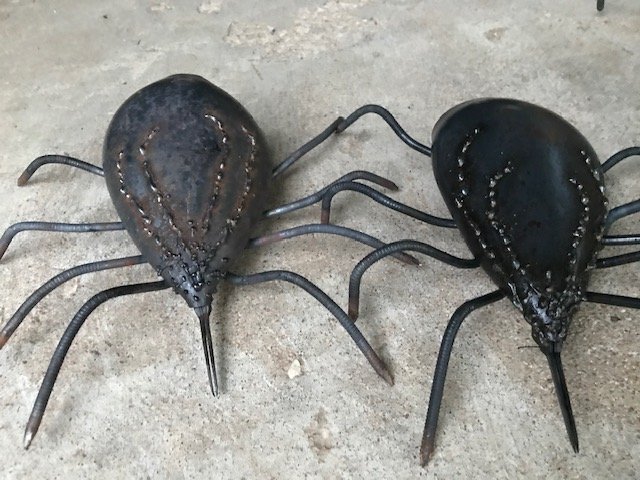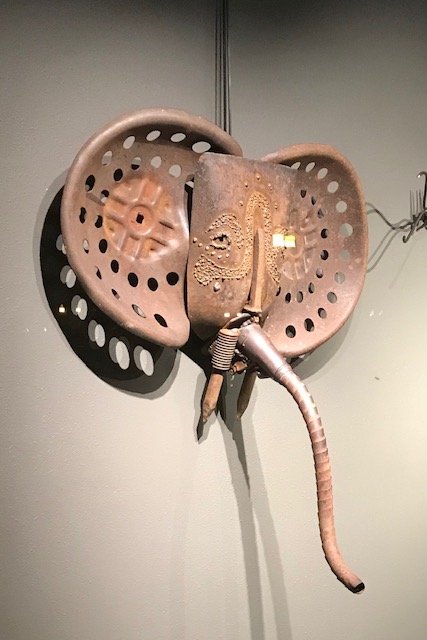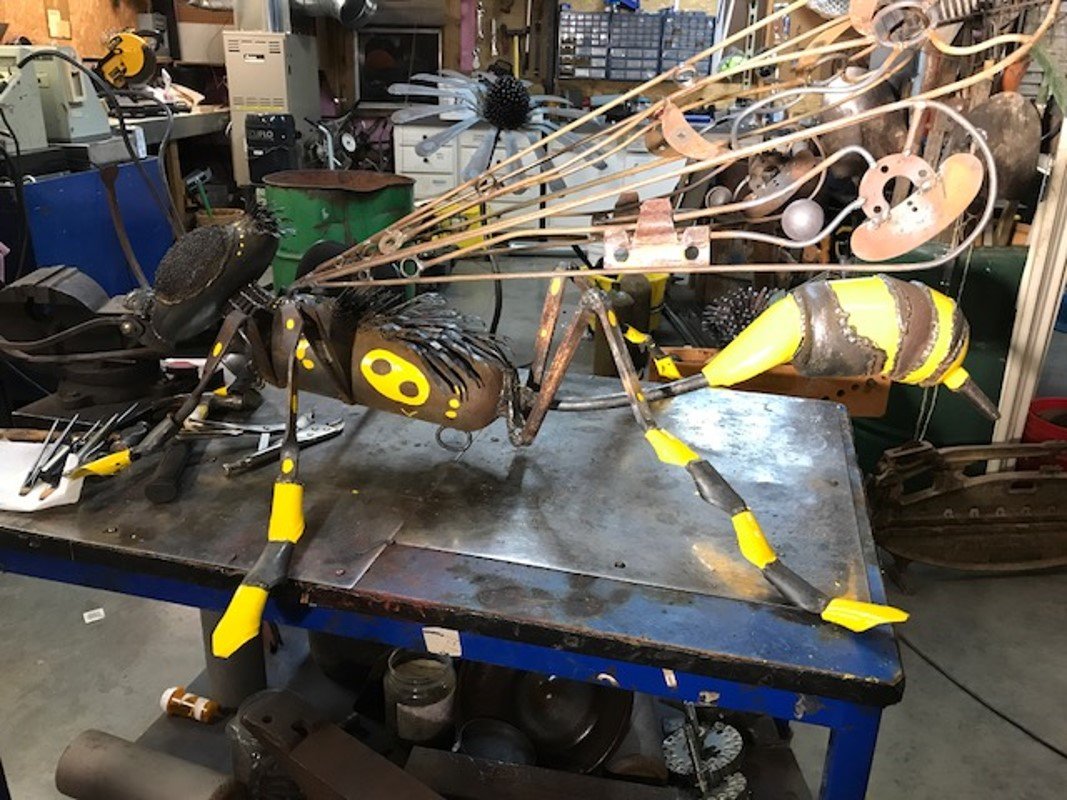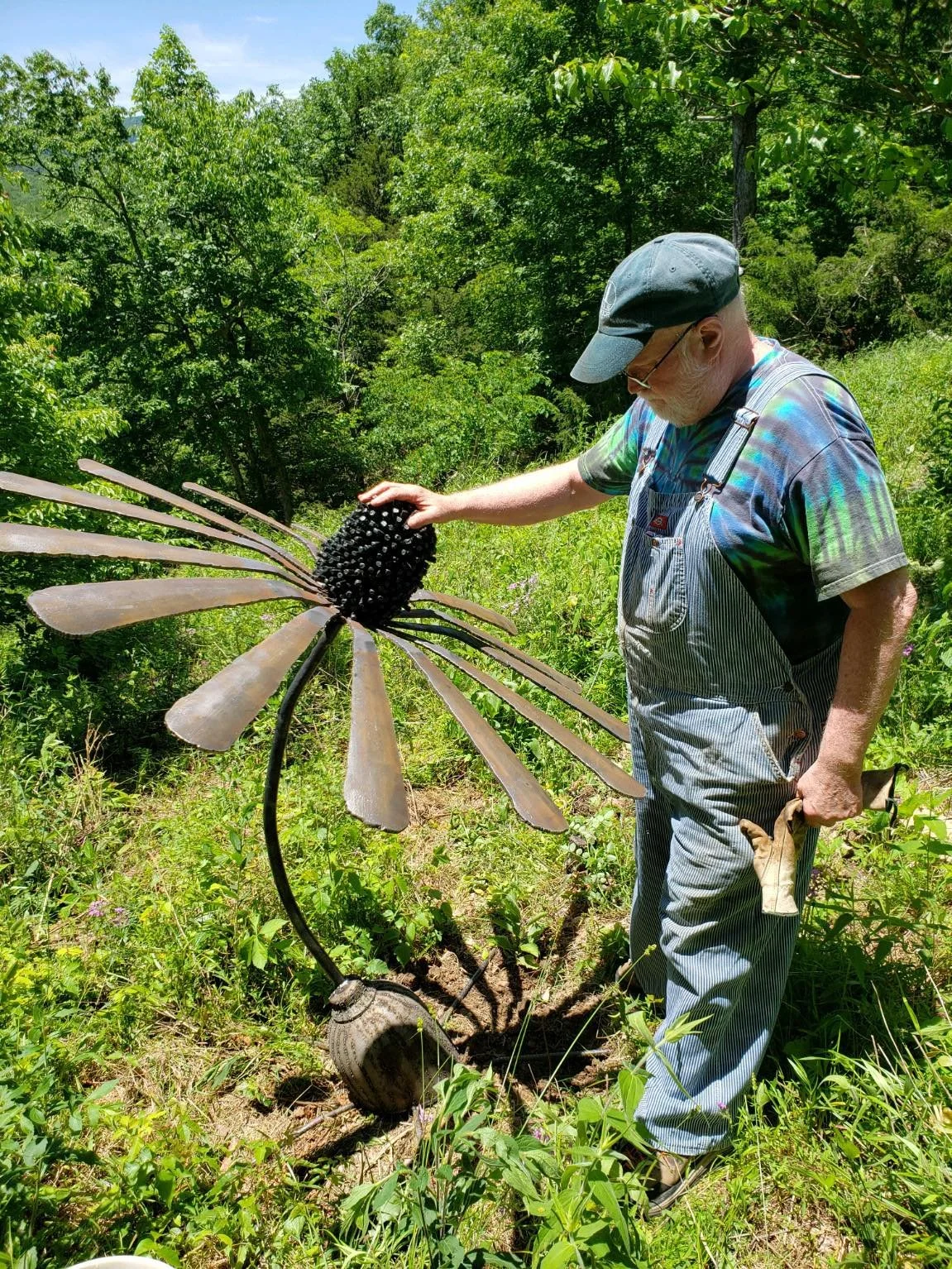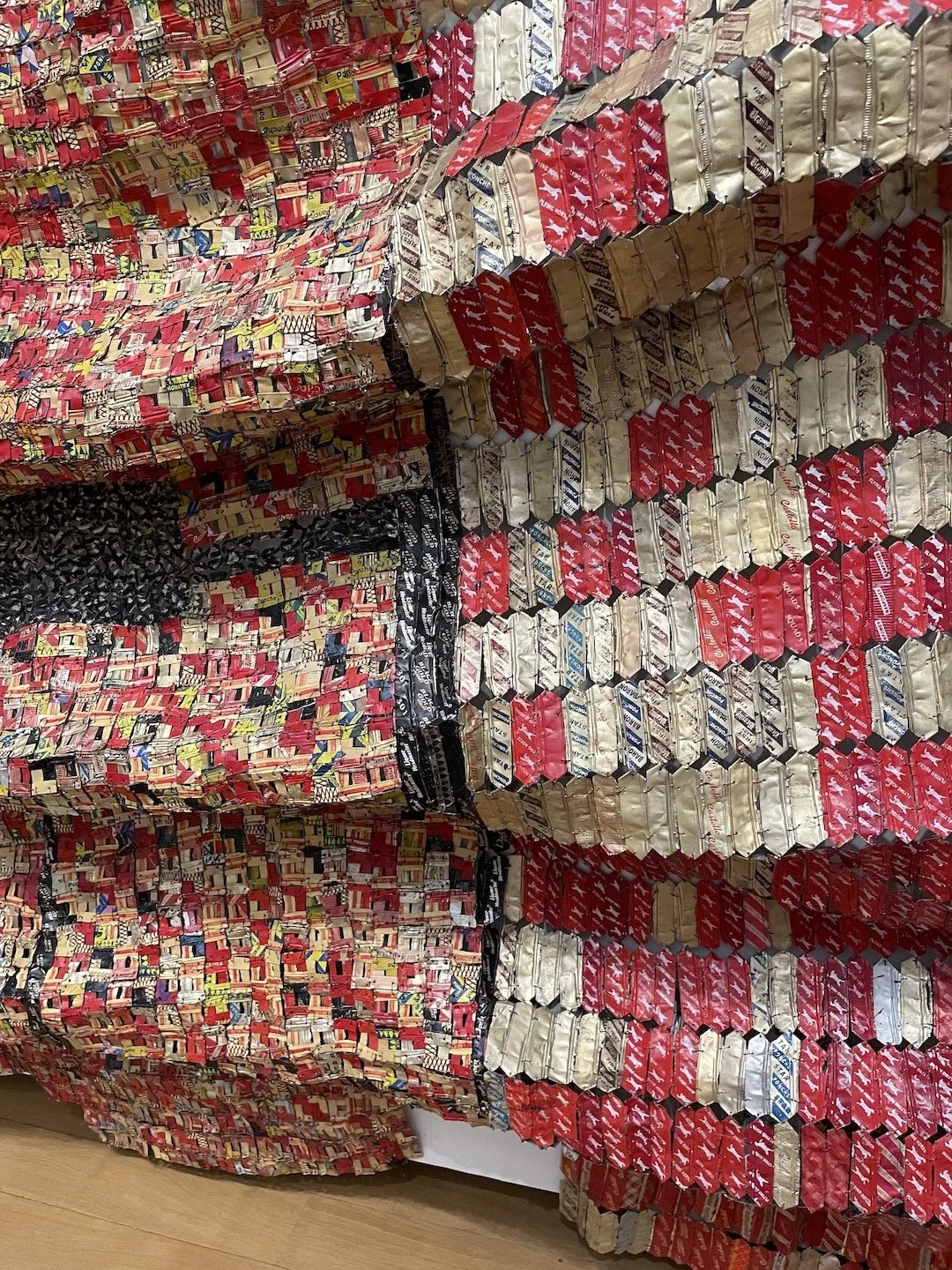Interview with artist Tom Flynn
Tom Flynn is a sculptor living in Rogers, Arkansas. His metal sculptures, inspired by flora and ‘fauna’ of Northwest Arkansas, are fanciful, comical, and sometimes icky – but always charming. More of Tom’s work can be found at Galleries & Bookstore at Library Square in Little Rock and Art Ventures in Fayetteville.

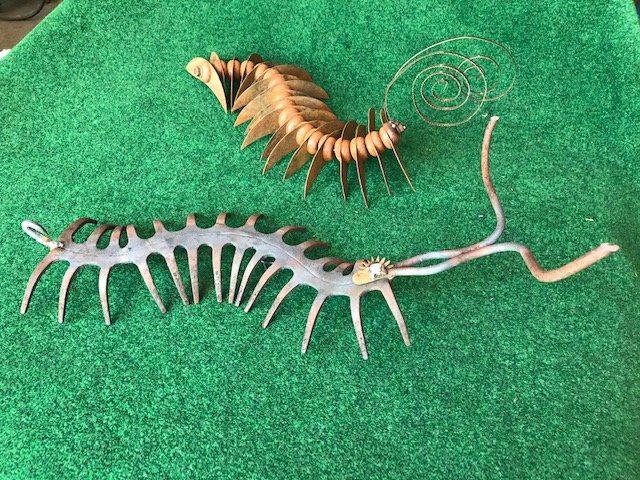

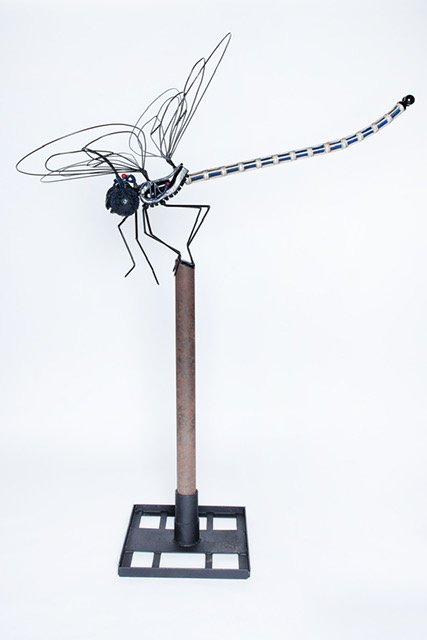
AAS: Tom, tell me about yourself. And what brought you to Rogers?
TF: Many years ago, I was a Benedictine monk in a monastery in New Mexico and one of the sayings that the Abbott said a lot was his definition of spiritual progress: “Spiritual progress is you take one step forward then you stumble back two, but that's a good thing because you were going the wrong way anyway.” I moved here from Austin, Texas because I got laid off from my job as an electrical and lighting designer for an electrical engineering firm, and I needed a job. It had nothing to do with art. I grew up in Odessa, Texas where I studied drafting because drawing did not sound like a good career choice. Later, after a deep religious experience as a teenager, I decided I wanted to be a Catholic priest. These days I refer to that period of my life as my three failed attempts at holy orders. Now I live in Rogers, Arkansas and I work full time as an electrical designer at an engineering firm where I work with a team that does the electrical engineering for a national fast food restaurant company. I make art whenever I can and plan on retiring soon hoping to make art full time.
AAS: Has creating and building with your hands something you have always done?
TF: I have always been creative, I play guitar, banjo and ukulele and I used to write gospel music a long time ago and I also used to brew beer. I got into the metal art years ago when my wife bought me an art welding class at local Community College. She said that I had always talked about wanting to be a metal artist, but I don't remember saying that before the class. I took the course and loved it and bought a cheap welder and started making things.
AAS: Your sculptures are very tied to nature. Why do you think you have that connection with the outdoors and its creatures and your apparent love of bugs?
TF: I often tell people that I am at the mercy of what I find. I often wonder if I still lived in West Texas if the found object metal being from oil fields would inspire me in different ways than the metal I find in northwest Arkansas. This part of Arkansas is such a beautiful outdoorsy place, so I’m not surprised that bugs and flowers seem to be the main things that I make.
AAS: Your Lightning Bugs are so charming and very clever. How did it come about that you started creating those?
TF: I have been making lightning bugs almost since the beginning. They have evolved over the years, and I have options for lighting them. The ones in Eureka Springs, Harmon Park are powered by a 12 Volt transformer and a photocell on/off. The ones in the installation in Iola Kansas are made with solar powered string lights, and I am currently working on some that will be solar powered with an internal computer chip (Arduino) that will control a LED disc that is programed to have the same color and blink on and off just like the lighting bugs in this region do. I have an entomology book that has a chart in the back for different bugs, there is a column that is labeled “purpose”. For the lightning bug that column said, “To bring joy and wonder to the world”. There is a vacant lot adjacent our house that is full of lightning bugs most summer nights, looking out over that scene gives me joy and hope for the world.
Lightning Bugs, typically 24” x 6” x 6”
AAS: Tell me about some of your outdoor installations. I know you’ve had some recent ones in Bella Vista and Eureka Springs.
TF: I currently have six permanent installations and a few temporary installations all over Arkansas. I have a chigger installation in downtown Little Rock, a daisy in front of the Daisy BB gun museum in Rogers and a coneflower in downtown Rogers, and then I have lightning bug installations at the Bella Vista library, Eureka Springs at Harmon Park, and along the Walking trails in Iola, Kansas.
The funny thing about the lightning bug installation is that all three of them happened pretty much in the same year. I was told I would be lucky to get one out of every 7 to 10 public art proposals. I applied for these three and got all three! I ended up having to make over forty lightning bugs. I ended up being late on some of them because I got sick. I have COPD and sometimes a small cold can turn into a major lung infection. I am still not fully recovered, and it looks like I have some permanent lung damage this time.
AAS: Is it safe so say you work primarily with found metal objects? Pterodactyl is an amazing piece and I recognize several objects. Was it a commissioned work?
Tom with his Pterodactyl (6’ wingspan, 8’ head to tail) at Fossil Cove Brewing in Fayetteville, Arkansas
TF: Depends on how you define found objects. Some of the objects I find are found in Home Depot and Wheeler Metals in Rogers. Pterodactyl is a good example of this. I was at a garage sale just a few blocks from my house and I told the man there I was a found object metal artist and did he have anything I could use. He got all excited and ran into his shed and came back and handed me these two pickax heads and started to tell me that they were his grandfathers and that one was for picking gold and the other was for picking silver. As he was telling me this it was like my mind split in two and I heard everything he said about his grandfather, but the other half of my brain built the pterodactyl. I knew what I would use for the wings and for the legs and the tail. Currently I have two pterodactyl sculptures one is in Fossil Cove Brewery in Fayetteville and the other is in Java Dudes Coffee Shop in Rogers.
AAS: Is the collection of metal objects in front of you what inspires a sculpture or do decide you want to create a character and then search for objects to make it work?
Armadillos, 20” x 6” x 6”
TF: I do have quite a collection of found metal objects. A few years ago, we moved to a smaller house with a bigger studio/shop for me. I tell people being a found object metal sculptor is a lot like being a hoarder. Typically, I am inspired by the metal objects in front of me, but sometimes as like with the armadillos, I'm not sure where the initial inspiration came from. When I make armadillo sculptures, I always make two at a time because in nature armadillos are always born as twins. I tell people that the reason their eyes are bugging out and their ears are so big it's because I am trying to capture the moment right before they get hit by the truck.
ASS: The Typist is wonderful! I grew up using a manual typewriter in my dad’s business.
The Typist, 12” x 12” x 3”
TF: I have several old typewriters and adding machines in my shop in various stages of disassembly. The Typist is made from a combination of typewriter and adding machine parts. I recently bought a tig welder, which is better for welding small parts like typewriter parts. And so far, I have electrocuted myself only a couple times trying to learn to use it.
AAS: I know you conduct workshops in Eureka Springs. That must be fun for everyone. Do students bring their own found objects to work with?
TF: For the Eureka Springs School of Arts classes I encourage people to bring their own metal if they have some. I also load my pickup truck up with a bunch of found object metal for the class to use. I teach a little about the basics of welding and shop safety and then after a short talk on creativity they are set free to create their own found object sculptures. I love seeing a student grab two pieces of metal out of the back of the truck and then their face lights up with excitement as they run towards the welders. My class this October is already full, but I think ESSA is planning on having another class in the spring.
AAS: What else do you do for fun, Tom?
Ray Gun, 4’ x 4’ x 5’
TF: Right now, I'm just so busy all the time between my full-time job as an electrical designer and my artwork. I do hope to retire in another year or two and become a full-time artist. I would love to be able to spend more time making music and art if my lungs will allow me. I love the varied reactions my artwork gets. One of the engineers who I work with just does not understand how anyone would buy my artwork as it is made from junk. I had a gallery owner that had a large Ray Gun I had made from truck springs plow discs and a fan frame. He said that he loved it when a couple would walk in the shop and see the ray gun and the man would say “I gotta have this!” and the woman would say “Oh no not in my house!” My dream for retirement is to sell one sculpture for a million bucks and then give away sculptures for the rest of my life.
